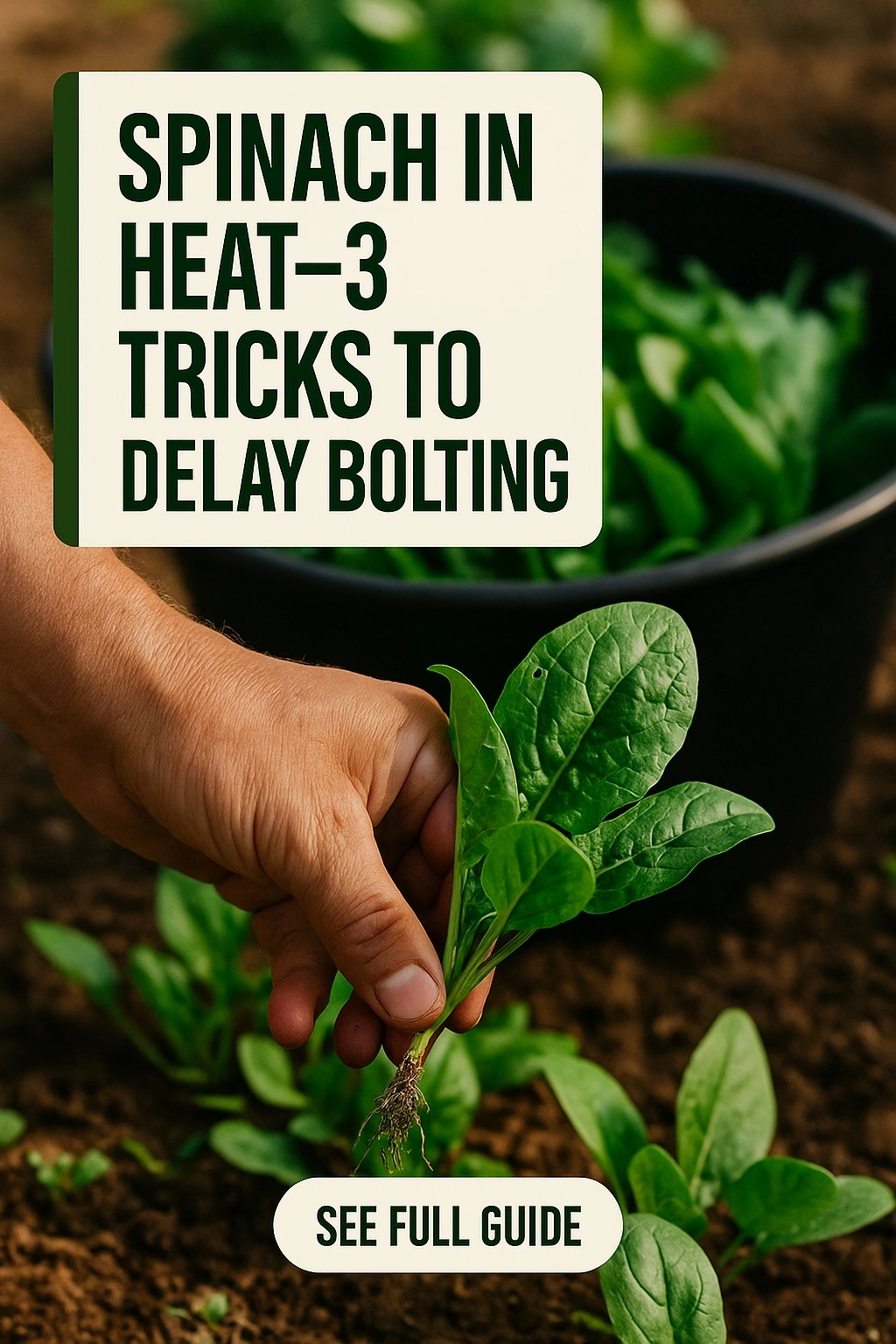
Spinach is a nutritious leafy green that many gardeners cherish for its versatility and health benefits. However, one of the most significant challenges faced by spinach growers is the plant’s tendency to bolt, especially in warmer temperatures. Bolting refers to the process where the plant prematurely flowers and produces seeds, which can make the leaves bitter and unpalatable. This article will explore effective strategies to delay bolting in spinach, ensuring a bountiful harvest of tender leaves.
What Causes Spinach to Bolt?
Bolting in spinach is primarily triggered by environmental factors such as temperature, light, and water availability. Spinach is a cool-season crop that thrives in moderate temperatures, typically between 50°F and 70°F. When the temperature rises above this range, particularly in spring or early summer, the plant senses stress and shifts its energy towards reproduction. Additionally, the length of daylight can influence bolting; as days become longer, spinach is more likely to bolt. Understanding these factors can help gardeners implement effective strategies to delay this process.
Three Effective Tricks to Delay Bolting in Spinach
Fortunately, there are several practical techniques that gardeners can use to prolong the growing period of spinach before it bolts. By implementing these methods, you can enjoy a longer harvest of delicious spinach leaves.
1. Choose the Right Varieties
Selecting the appropriate spinach variety is crucial in managing bolting. Some spinach varieties are specifically bred to be bolt-resistant and can withstand warmer temperatures better than others. Varieties such as ‘Bloomsdale’ and ‘Tyee’ are known for their ability to produce leaves even in warmer conditions. When planning your garden, consider planting these varieties, especially if you live in a region that experiences early heat waves.
2. Provide Adequate Shade
Creating shade for your spinach plants can significantly reduce the risk of bolting. As temperatures rise, the heat can stress the plants, prompting them to flower. One effective way to provide shade is by using shade cloth or row covers. Positioning these materials over your spinach beds can lower the temperature around the plants, preserving their delicate leaves. Another option is to plant taller crops nearby that can provide natural shade during the hottest parts of the day.
3. Maintain Optimal Watering Practices
Watering plays a vital role in delaying bolting in spinach. Consistent and adequate moisture helps keep the plants healthy and reduces stress. Spinach prefers well-drained soil that remains consistently moist but not waterlogged. A deep watering regimen, particularly during dry spells, ensures that the plants have enough hydration to thrive. Mulching around the plants can also help retain moisture and regulate soil temperature, providing a more stable environment for growth.
Additional Tips for Successful Spinach Cultivation
In addition to the three main strategies discussed, there are several other practices that can promote healthy spinach growth and delay bolting.
Soil Preparation
Before planting spinach, ensure that the soil is rich in organic matter. Incorporating compost or well-rotted manure can improve soil structure and provide essential nutrients. Spinach thrives in fertile soils, which helps the plants grow strong and resilient against environmental stresses.
Timing Your Planting
Timing is significant when it comes to planting spinach. Aim to sow seeds in early spring or fall when temperatures are cooler. In many regions, a second crop can be planted in late summer for a fall harvest. By timing your planting correctly, you can avoid the hot summer months that often trigger bolting.
Common Challenges and Solutions
While spinach is generally a hardy plant, it can face various challenges that may contribute to bolting or poor growth. Here are some common issues and practical solutions.
Pest Control
Insects such as aphids and leaf miners can affect spinach health. Regular monitoring and using organic pest control methods, such as insecticidal soap, can help keep pests at bay without harming the plants.
Nutrient Deficiencies
Spinach requires specific nutrients for optimal growth. A balanced fertilizer can help address any deficiencies. Look for fertilizers that are high in nitrogen, as this nutrient supports leafy growth and can help mitigate bolting.
FAQs About Spinach and Bolting
What is bolting in spinach?
Bolting in spinach refers to the premature flowering and seed production of the plant, which typically occurs in response to stress from high temperatures or long daylight hours. This process results in a change in leaf texture and flavor, making them less desirable for consumption.
How can I tell if my spinach is about to bolt?
Signs that spinach is about to bolt include rapid vertical growth, the appearance of flower stalks, and a change in leaf texture. The leaves may also become smaller and more bitter as the plant shifts its energy towards reproduction.
Can I still eat spinach that has bolted?
While bolted spinach is edible, it often has a bitter taste and tougher texture. If the plant has just begun to bolt, you may still find the leaves palatable, but it is generally best to harvest before bolting occurs for the best flavor and texture.
Is it possible to save bolted spinach?
Once spinach has bolted, it cannot revert to its vegetative state. However, you can still harvest the leaves for cooking or use them in smoothies, where the bitterness may be less noticeable. Alternatively, consider allowing the plant to complete its life cycle and produce seeds for future planting.
What is the best time to plant spinach to avoid bolting?
The optimal time to plant spinach to avoid bolting is in early spring or late summer. This timing allows the plants to grow in cooler temperatures, reducing the risk of bolting due to heat stress.
